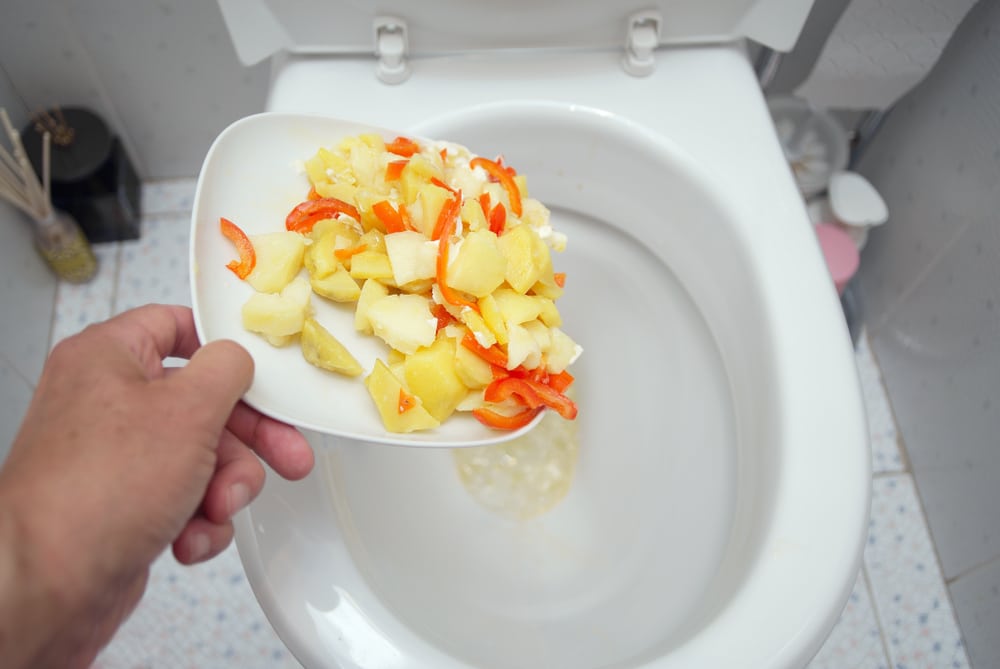How do you feel when it comes to What Can Happen If You Flush Food Down the Toilet??

Intro
Many individuals are usually faced with the dilemma of what to do with food waste, specifically when it concerns leftovers or scraps. One common inquiry that develops is whether it's fine to flush food down the commode. In this short article, we'll look into the reasons that people may consider flushing food, the consequences of doing so, and alternate approaches for appropriate disposal.
Reasons people might take into consideration flushing food
Lack of recognition
Some individuals might not recognize the possible harm triggered by purging food down the toilet. They might incorrectly think that it's a harmless method.
Comfort
Purging food down the bathroom may look like a quick and simple option to disposing of undesirable scraps, particularly when there's no nearby trash can offered.
Laziness
In many cases, individuals may simply pick to flush food out of sheer negligence, without thinking about the consequences of their activities.
Effects of flushing food down the bathroom
Ecological effect
Food waste that winds up in rivers can add to air pollution and damage marine communities. In addition, the water made use of to flush food can strain water resources.
Pipes concerns
Flushing food can lead to stopped up pipes and drains pipes, causing pricey plumbing repairs and hassles.
Types of food that must not be purged
Fibrous foods
Foods with fibrous textures such as celery or corn husks can obtain entangled in pipelines and create obstructions.
Starchy foods
Starchy foods like pasta and rice can take in water and swell, causing blockages in pipes.
Oils and fats
Greasy foods like bacon or cooking oils should never be purged down the commode as they can solidify and create clogs.
Proper disposal methods for food waste
Utilizing a waste disposal unit
For homes equipped with waste disposal unit, food scraps can be ground up and flushed via the plumbing system. Nonetheless, not all foods appropriate for disposal in this way.
Recycling
Certain food product packaging products can be recycled, decreasing waste and lessening environmental impact.
Composting
Composting is an environment-friendly method to take care of food waste. Organic materials can be composted and used to improve soil for horticulture.
The importance of correct waste administration
Lowering environmental harm
Correct waste monitoring practices, such as composting and recycling, help reduce air pollution and protect natural resources for future generations.
Securing pipes systems
By staying clear of the technique of flushing food down the toilet, house owners can stop costly plumbing repair work and maintain the honesty of their pipes systems.
Conclusion
In conclusion, while it may be appealing to purge food down the bathroom for benefit, it is necessary to understand the prospective repercussions of this activity. By adopting correct waste administration techniques and taking care of food waste properly, people can contribute to healthier pipes systems and a cleaner atmosphere for all.
FLUSH FOOD DOWN THE TOILET?
FLUSHING FOOD CAN CAUSE BLOCKED DRAINS IN YOUR HOME
All of the plumbing fixtures in your home are connected to the same sewer pipe outside of your home. This outdoor sewer pipe is responsible for transporting all the wastewater from your home to the Council sewer mains. Even small pieces of food that go down the kitchen sink can cause problems for your sewer. It should therefore be obvious that flushing larger bits of food, such as meat, risks a clog in either the toilet itself or the sewer pipes. Flushing greasy food is even more problematic because oil coagulates when it cools, coating the interior lining of your pipes.
THE TOILET IS NOT A BIN
Food isn’t the only thing that people shouldn’t be flushing down the toilet. People use the toilet to dispose of all kinds of things such as tampons, makeup wipes, dental floss, kitty litter and even underwear. Water goes to great lengths to educate residents about the high costs and stress placed on wastewater treatment systems simply from people flushing the wrong stuff down the toilet. It costs taxpayers millions of dollars each year, and homeowners thousands in blocked drain repairs.
FLUSHING FOOD IS A WASTE OF WATER
Flushing food is a waste of our most precious resource - water. In June this year Level 1 water restrictions were introduced to protect water supply from drought conditions. Much of New South Wales continues to be affected by prolonged drought with recent figures revealing up to 97 per cent of the state remains in drought. Depending on whether you have a single or dual flush toilet, every single flush uses between five and 11 litres of water. In the current climate this is a huge amount of water to be wasting on flushing food that should be placed in the bin (or better yet, the compost).
https://www.jabplumbingsolutions.com.au/blog/can-you-flush-food-down-the-toilet

Do you appreciate reading up on Think Twice Before Flushing Food Down Your Toilet? Post a remark below. We'd be happy to listen to your views about this blog entry. We hope that you visit us again soon. Enjoyed our write-up? Please share it. Let someone else locate it. Thanks for your time spent reading it.
Quote & Schedule
Comments on “Can You to Dispose of Food in the Toilet?”